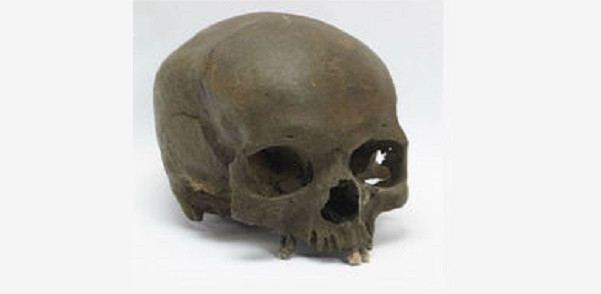Skull of beheaded Iron Age woman discovered by dogwalker
The woman was about 45 years old or older and suffered from gum disease.

A skull found by a dog walker in Somerset belongs to woman from the Iron Age, analysis has revealed.
Last year, a dogwalker was taking a stroll by the River Sowy in Somerset when they stumbled upon a skull.
It had now been confirmed the skull dates back to the Iron Age (380-190 BC) and belonged to a woman aged about 45 or more.
After the discovery, the Environment Agency (EA) reduced water levels to let the archaeologists from the South West Heritage Trust (SWHT) inspect the area in hopes of finding more clues regarding the skull.
While the skull was the only human remain found within the perimeter, the SWHT team found timber posts that could have made up a causeway or raised walkway. They are now being analysed through radio carbon-dating tests to see if they date back to the same time.
According to the EA, more posts were found a further along the banks, suggesting similar wooden structure might be nearby.
"The chance discovery on the banks of the River Sowy has shone fresh light on Somerset's hidden history," said EA archaeologist Stephen Dean. "It has already added valuable information to the Somerset Historic Environment Record and reinforced our connections with the South West Heritage Trust."
He stressed the importance of the finding, saying: "Only by understanding this heritage can we hope to leave it a condition fit for generations to come."
In order to do as little damage as possible to the Sowy's banks, water levels have now gone back to normal.
The research team suggests that the woman might have been beheaded either at the time of her death or shortly after. The reason why is still subject to speculation.
"Severed heads are not an unusual discovery for the Iron Age, but the placement of the skull in a wetland beside a wooden structure is very rare, possibly reflecting a practice of making ritual offerings in watery environments," says SWHT's Richard Brunning.
Subsequent analysis from a bone expert shows that the woman suffered from gum disease and was missing several teeth.
It appears her diet consisted mostly of rough material, which had damaged the right side of her jaw and her remaining teeth.
The expert also noted she might have had suffered from some kind of chronic illness of nutrition stress (a form of stress resulting from a lack of good nutrient) as a child.






















